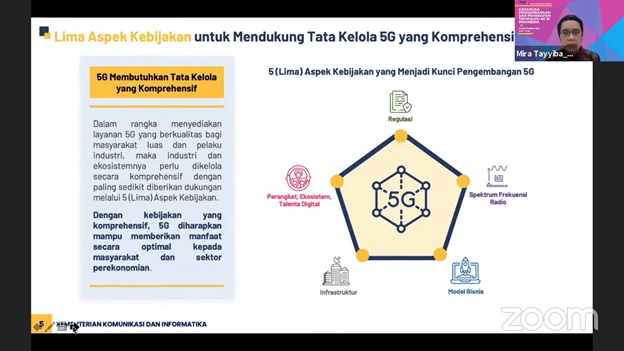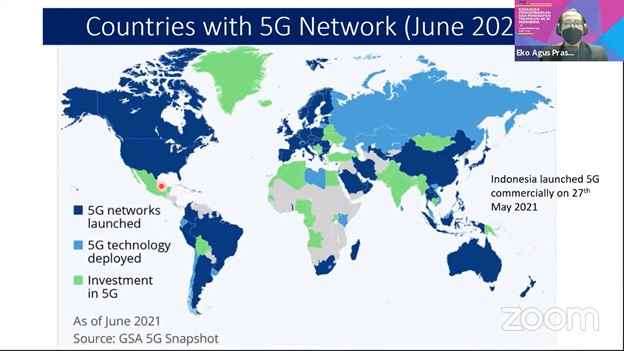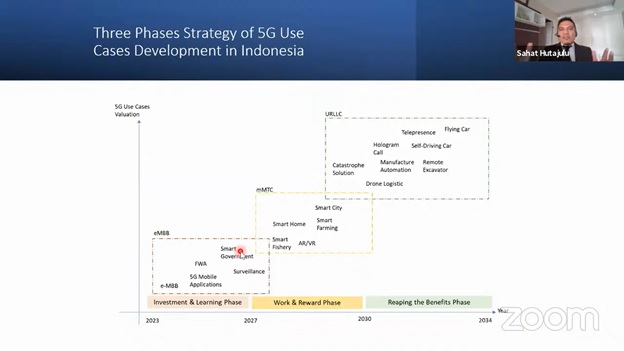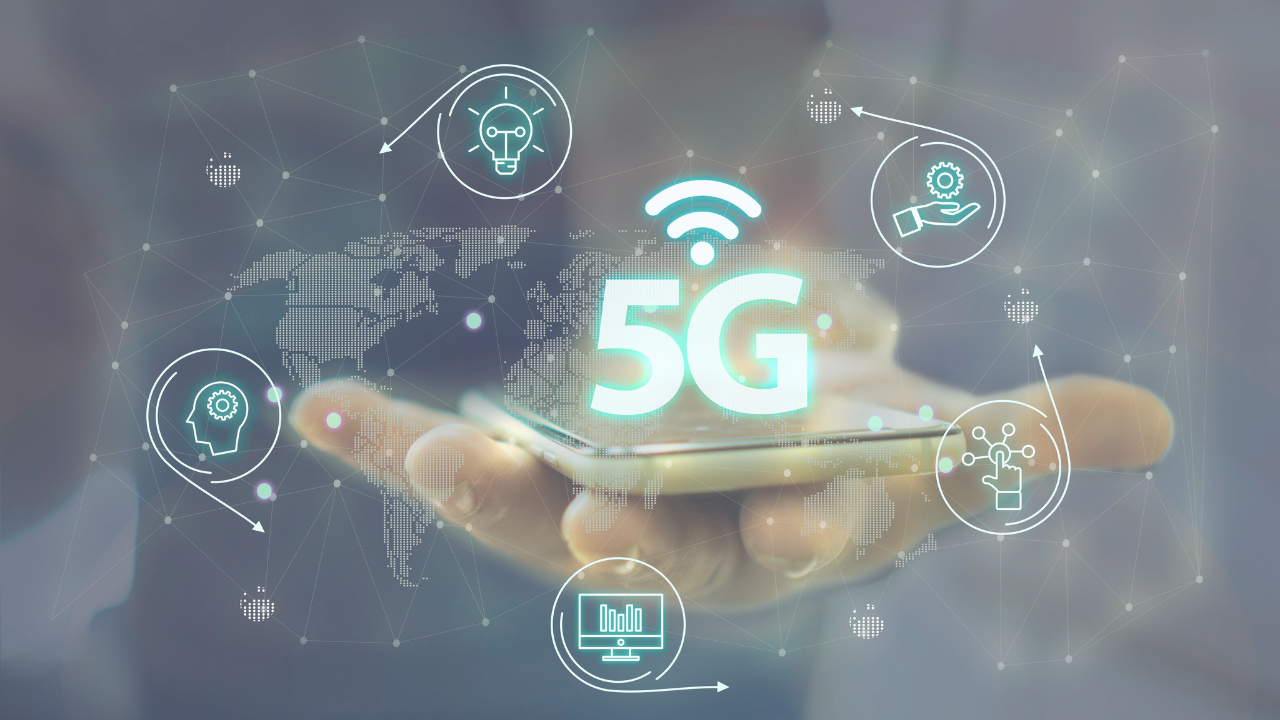It is estimated that there will be 7 billion smartphones in the world by 2025, with 5.7 billion of them connected to 5G networks. Similarly, the potential for smartphone growth in Indonesia will continue to grow exponentially, reaching 338 million smartphones by 2025. However, only 5.42 per cent of them can connect to this internet connection.

The Secretary-General of the Ministry of Communications and Informatics of the Republic of Indonesia, Mira Tayyiba, stated that the expansion of the 5G network could be a ‘Game Changer’ with a significant impact on global connectivity. With the benefits, such as ten times faster speed, shorter delay times, and more efficient consumption, this technology can benefit all of us greatly. Starting with the public sector, moving on to the private sector, academia, and the broader community.

Komenkominfo has also transformed by implementing five key policies and adopting 5th generation network technology. The five key policies are regulation, frequency spectrum, business model, infrastructure to software, ecosystem, and business talent. It is hoped that with these key policies, the provision of quality 5G services for the community and industry players will help build a healthy ecosystem that will continuously grow.
Three panellists from the academic and business world also presented their research in this event, namely the Divisional Head of Technology at the Institute for Innovation and Entrepreneurship Development (LPIK ITB), Eko Agus Prasetio, Head of CU ID Local Administrative Support at Ericsson Sahat Hutajulu, Director & Chief Strategy, and Innovation Officer at Indosat Ooredoo, Arief Musta’in.
Eko discussed the potential outcomes of implementing 5G network technology. Eko, an Assistant Professor at SBM-ITB, added that technology transfer is more than just a matter of speed. However, there are additional benefits resulting from the emergence of 5G.
5G technology opens up new business opportunities and transforms various industries. The application of this technology has the potential to boost revenue growth by 36% to US$ 619 billion by 2026. Manufacturing (US$ 113 billion), energy and utilities (US$ 101 billion US dollars), public safety (US$ 78 billion), healthcare (US$ 76 billion), public transportation (US$ 74 billion), media and entertainment (US$ 62 billion), automotive (US$ 48 billion), financial services (US$ 30 billion), retail (US$ 29 billion), agriculture (US$ 8 billion) are the sectors with the most potential.
The application of 5G technology to innovation will be the future challenge of its existence in Indonesia. With faster speeds, previously impossible applications (using 4G) become possible.
“The example of the finding is how to do things remotely. How Jakarta surgeons can operate on patients with special needs in other cities,” said Eko.

It is undeniable that several aspects need to consider when implementing this cutting-edge network technology. Starting with the high investment costs, procurement of infrastructure (both fibre optic and frequency spectrum), government integration with local governments, financial losses for MNOs and other businesses, and current limitations of creativity, innovation, and application.
It concludes with Arief Musta’in’s presentation on value creation due to the 5G network. According to Arief, the telecommunications industry is now the backbone of all daily life activities. In terms of value, we are no longer as hardware-centric as we once were. We are now living in the software era. The value creation process that appears is driven by the digital infrastructure in the form of software.
It is important to recognize that the telecommunications industry still has a long way. Arief also believes that once Indonesia has better infrastructure, a better innovative ecosystem can be built.




